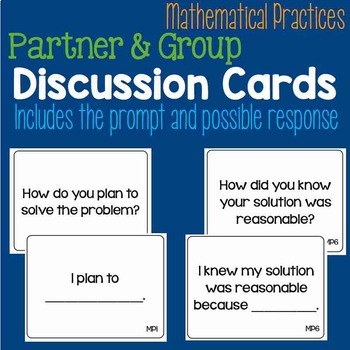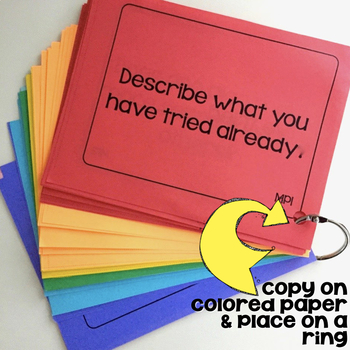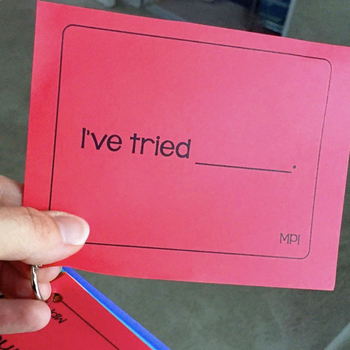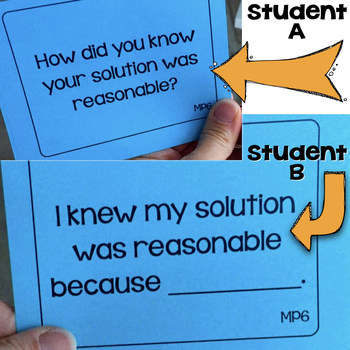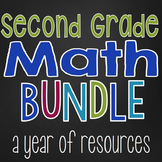Mathematical Practices Partner & Group Discussion Cards
- PDF
What educators are saying
Also included in
- This Second Grade Math BUNDLE is full of resources for your classroom. These are the same activities and games that I have used in my classroom for the past several years. Resources are arranged by season and unit. To help you plan to use the resources in the BUNDLE, check out my Second Grade MatPrice $199.95Original Price $387.72Save $187.77
Description
Each set of Mathematical Practice Cards has two pages of cards, one with the prompt and one with a possible student response (sentence frame). Some prompts & responses are similar, but with more complex questions. Choose the cards that work for your students. I suggest that you focus on one or two mathematical practices (possibly 1 & 6) for a period of time until students are comfortable with the process of having discussions about the math.
Copy back to back, with the prompt on one side and the sentence frame on the back. Since these are intended to be copied back-to-back, the prompt and response are on opposite sides of the pages so that they match up when copied.
Encourage student A, who asks the question, to hold the card up so that student B, who responds, can see the sentence frames.
Each card has the Mathematical Practice Standard labeled on it. Copy each set of Mathematical Practice prompts and responses on a separate color of card stock to facilitate sorting and focusing on certain standards. Hole punch and keep on rings.
CLICK HERE TO FOLLOW ME ON TPT | CLICK HERE TO CHOOSE A FREE RESOURCE
TERMS OF USE
Copyright © What I Have Learned, Jessica Boschen
Permission to copy for single classroom or homeschool family use only.
This product may not be distributed or displayed digitally for public view.
Please purchase additional licenses if you intend to share this product.

